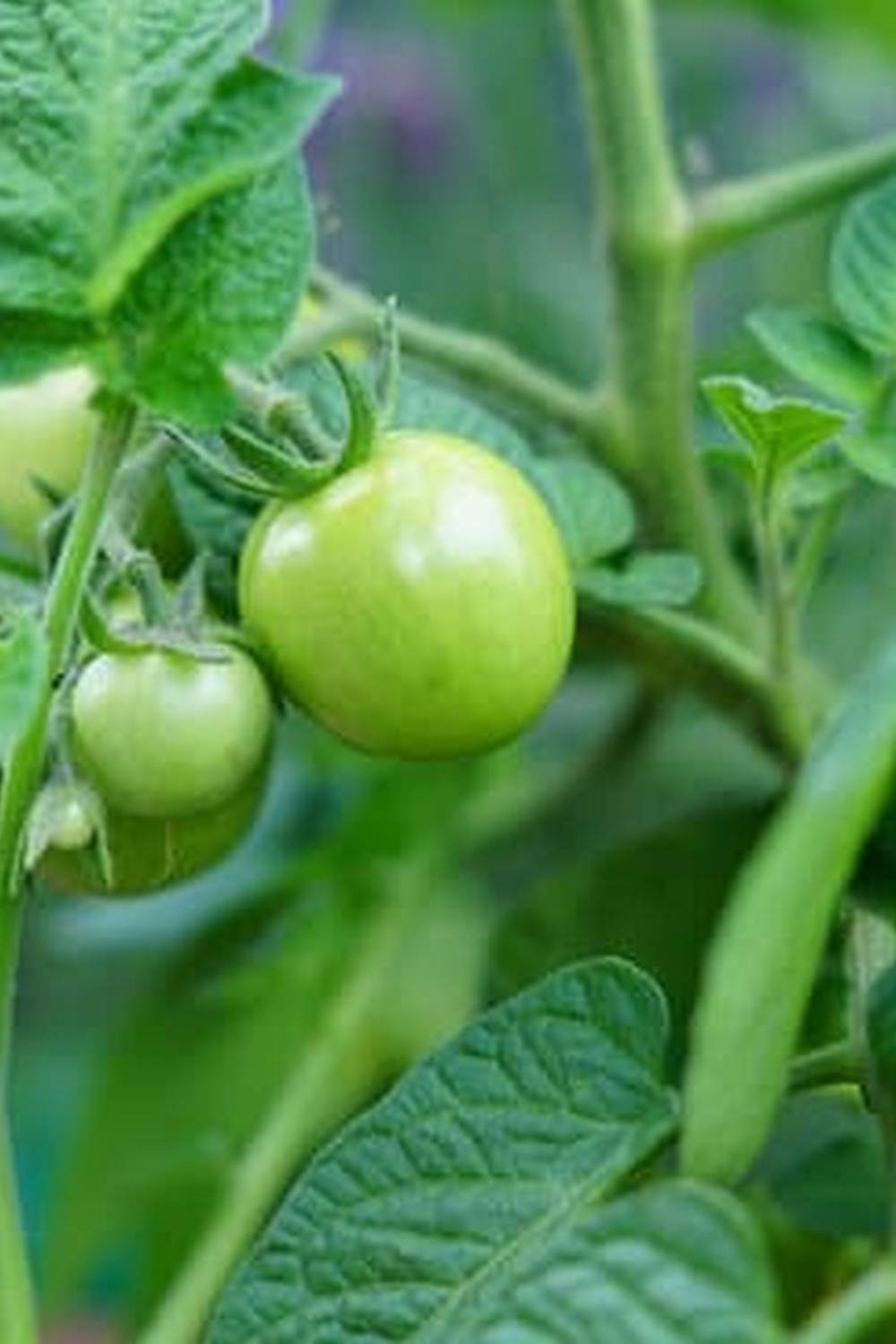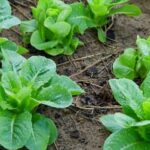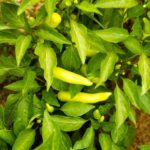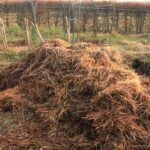When do Alabama vegetable gardens die out? Understanding the climate and growing season in Alabama is essential for any successful gardening endeavor. With hot, humid summers and mild winters, it’s important to know when to expect the end of your vegetable garden’s lifespan.
In this article, we will discuss tips for fall vegetable gardening, signs that your vegetables are nearing the end of their lifespan, steps to prepare for the end of the growing season, how to protect your garden from frost, and how to make the most of the final days by harvesting and preserving your crops. Additionally, we will cover how to plan for next year’s growing season and reflect on lessons learned.
The climate in Alabama plays a significant role in determining when vegetable gardens will die out. Understanding the region’s weather patterns and growing season is crucial for maintaining a flourishing garden. The long, hot summers can lead to an early demise for many vegetables if not properly tended to. However, with strategic planning and care, it is possible to extend the lifespan of your garden well into the fall months.
As fall approaches, it’s important to be aware of signs that your vegetables are reaching their end. By recognizing these indicators early on, you can take proactive measures to ensure a bountiful harvest before it’s too late. Preparing for the end of the growing season involves various steps such as clearing out old plants, amending soil, and protecting against frost damage. These preparations are vital in maximizing the remaining days of your garden’s productivity.
Understanding when Alabama vegetable gardens typically die out is crucial for any gardener looking to make the most of their harvest. With proper knowledge and preparation, you can extend the lifespan of your garden and ensure a successful transition into next year’s growing season.
Tips for Fall Vegetable Gardening
As the growing season in Alabama starts to wind down, fall vegetable gardening becomes crucial for extending the lifespan of your garden. With the right approach, you can continue to enjoy a bountiful harvest well into the cooler months. Here are some essential tips for fall vegetable gardening:
- Choose the right vegetables: When selecting vegetables for your fall garden, opt for cold-hardy varieties such as kale, carrots, cabbage, and Brussels sprouts. These plants can withstand lower temperatures and are more likely to thrive as the season progresses.
- Start planting early: To maximize your fall harvest, it’s important to start planting your vegetables early in the season. This allows them to establish strong root systems before the colder weather sets in.
- Implement season extenders: Consider using row covers, hoop houses, or cold frames to protect your plants from frost and prolong their growing season. These season extenders can provide an extra layer of insulation and shield your vegetables from harsh weather conditions.
By following these tips for fall vegetable gardening, you can keep your garden thriving well into the autumn months and enjoy a continuous supply of fresh produce.
Remember that proper care and attention are necessary when do Alabama vegetable gardens die out is constantly on every gardener’s mind during this transition period. With the right strategies in place, you can ensure that your garden remains productive and vibrant until the end of the growing season.
Signs of Vegetables Nearing the End of Their Lifespan
As the summer heat gives way to cooler fall temperatures in Alabama, gardeners need to be aware of the signs that their vegetable gardens are nearing the end of their lifespan. Knowing when to expect the end of the growing season can help you maximize your garden’s productivity and prepare for next year.
One of the first signs that your vegetable garden is reaching its end is when plants start to show signs of decline. This can include wilting leaves, slower growth, and decreased fruit production. Keep an eye out for any diseases or pest infestations that could further weaken your plants as they near the end of their lifespan.
Another indicator that your vegetable garden is winding down is when daylight hours begin to decrease, signaling the approach of winter. Shorter days and diminishing sunlight can impact plant growth and reduce overall productivity. It’s important to monitor these changes and adjust your gardening practices accordingly as fall progresses.
| Signs of End-of-Season | How to Recognize |
|---|---|
| Decline in plant health | Wilting leaves, slower growth, decreased fruit production |
| Decreasing daylight hours | Shorter days, diminishing sunlight, impact on plant growth and productivity |
By recognizing these signs and understanding how they impact your vegetable garden, you can better prepare for the end of the growing season in Alabama. This knowledge will enable you to make informed decisions about harvesting remaining crops, protecting plants from frost, and planning for next year’s garden. With careful attention to these indicators, you can ensure a successful transition from one growing season to the next.
Preparing for the End of the Growing Season
As the growing season in Alabama begins to come to a close, it’s important for gardeners to prepare for the end and take steps to ensure that their vegetable gardens are ready for the transition. Alabama’s climate typically includes warm summers and mild winters, which means that vegetable gardens will eventually die out as the temperatures drop.
It’s crucial for gardeners to be proactive in preparing their gardens for this change and take steps to protect their plants from frost and other potential threats.
Clearing Out Spent Plants
One of the first steps to take as the growing season winds down is to clear out any plants that have reached the end of their lifespan. This can include removing any vegetables that have stopped producing, as well as pulling up any plants that have started to wilt or wither. Clearing out spent plants not only helps tidy up the garden but also prevents potential disease from spreading to healthy plants.
Adding Organic Matter
To prepare the soil for the next growing season, adding organic matter can be beneficial. Incorporating compost or other organic materials into the soil can help replenish nutrients and improve soil structure, setting the stage for healthy plant growth in the future. This step is especially important after a long growing season when the soil may be depleted of essential nutrients.
Protecting Against Frost
As temperatures begin to drop, it’s crucial to protect your vegetable garden from frost. Covering delicate plants with row covers or cloches can help prevent damage from freezing temperatures and extend the lifespan of your garden. Additionally, bringing potted plants indoors or placing them in a greenhouse can provide extra protection against frost, allowing you to continue enjoying fresh produce even as winter approaches.
By taking these proactive steps and preparing for the end of the growing season, Alabama gardeners can make the most of their vegetable gardens and set themselves up for success in future growing seasons. Recognizing when do Alabama vegetable gardens die out is essential for taking appropriate action to ensure a bountiful harvest year after year.
How to Protect Your Garden From Frost
As the growing season in Alabama draws to a close, one of the biggest challenges that vegetable gardeners face is the threat of frost. A sudden drop in temperature can spell disaster for your garden, causing your plants to wither and die prematurely. In this section, we will discuss some important tips for protecting your garden from frost and ensuring that you can extend the lifespan of your vegetable garden for as long as possible.
Monitoring Weather Forecasts and Frost Dates
One of the most important steps in preventing frost damage to your vegetable garden is to stay informed about weather forecasts and frost dates in your area. By keeping a close eye on the predicted temperatures, you can take proactive measures to protect your plants when chilly nights are on the horizon.
Additionally, knowing the average first and last frost dates for your region can help you plan ahead and make informed decisions about when to start planting and when to expect the end of the growing season.
Use Protective Coverings
When frost is forecasted, using protective coverings such as row covers, cloches, or even old bedsheets can help insulate your plants and shield them from freezing temperatures. These coverings act as a barrier against cold air, trapping heat around your plants and preventing frost damage. Remember to remove these coverings during the day to allow sunlight and air circulation before covering them again at night.
Implementing Frost Protection Tactics
In addition to using protective coverings, there are other tactics that can help protect your garden from frost. Mulching around your plants can help retain soil heat and prevent rapid temperature fluctuations. Watering your garden before a predicted frost event can also provide some protection, as moist soil retains heat better than dry soil. Lastly, consider using cold frames or hoop houses for more substantial protection against freezing temperatures.
By taking proactive measures to protect your vegetable garden from frost as the growing season comes to a close, you can extend the lifespan of your garden and continue enjoying fresh produce for as long as possible. Being prepared for potential frosts can make all the difference in ensuring that your hard work pays off until the very end of the growing season.
Harvesting and Preserving
As the end of the growing season approaches, it’s important to make the most of your vegetable garden by harvesting and preserving your bountiful produce. Here are some tips for ensuring that you can enjoy the fruits of your labor well beyond the end of the season:
- Harvest frequently: Keep a close eye on your vegetables and harvest them as soon as they are ripe. This will not only prevent overripening or spoilage, but also encourage more growth from the plants.
- Preserve your harvest: Consider techniques such as canning, pickling, freezing, or drying to preserve your vegetables for future use. This will allow you to enjoy your homegrown produce even after the growing season has ended.
- Make use of green tomatoes: If frost is on the horizon and there are still green tomatoes on your plants, consider harvesting them and allowing them to ripen indoors. Alternatively, you can use them in recipes such as fried green tomatoes or green tomato relish.
By taking these steps, you can prolong the life of your vegetable garden well into the fall and winter months. Not only will you be able to savor the flavors of your garden for longer, but you’ll also be able to reduce waste and enjoy the fruits of your labor throughout the year.
Remember that with proper care and attention, your vegetable garden doesn’t have to die out at the end of the growing season-instead, it can continue to provide fresh produce long after summer has come to an end.
Planning for the Next Growing Season
As the current growing season begins to wind down, it’s essential to start thinking about preparing your garden for next year. Alabama’s climate and growing season play a significant role in determining when vegetable gardens die out.
Typically, vegetable gardens in Alabama begin to die out in late fall or early winter as temperatures drop, and frost becomes more frequent. However, with proper planning and preparation, you can ensure that your garden is ready for next year’s growing season.
One important step in preparing your garden for next year is to clean up and clear out any dead or dying plants from this year’s garden. Removing old plants will help prevent the spread of diseases and pests that could potentially harm next year’s crops. Additionally, clearing out old plants will also make it easier to prepare the soil for the upcoming growing season.
Another crucial aspect of preparing your garden for next year is to take stock of what worked well in this year’s garden and what didn’t. Make notes about which vegetables thrived and which ones struggled, as well as any issues you encountered with pests or diseases. This information will be invaluable when planning next year’s garden, helping you make informed decisions about crop selection and pest management strategies.
Finally, consider enriching the soil in your garden by adding organic matter such as compost or well-rotted manure. Amending your soil during the fall months will give these organic materials time to break down and improve the soil structure, fertility, and overall health in preparation for planting next year’s crops.
| Preparation Tips | Description |
|---|---|
| Clean up old plants | Clear out dead or dying plants to prevent the spread of diseases and pests. |
| Evaluate current garden | Take note of what worked well and what didn’t to inform decisions for next year’s garden. |
| Enrich soil | Add organic matter such as compost or manure to improve soil fertility and health for the next growing season. |
By taking these steps now to prepare your vegetable garden for next year, you’ll be setting yourself up for success when the next growing season arrives. Planning ahead will not only help your future crops thrive but also make the transition into the new planting season much smoother.
Final Thoughts
As the days grow shorter and the temperatures start to drop, it’s important for Alabama vegetable gardeners to be mindful of when the growing season is coming to an end. Understanding the climate and growing season in Alabama is crucial for successful gardening. With the right knowledge and preparation, you can ensure that your vegetable garden lasts as long as possible and yields a bountiful harvest.
As fall approaches, there are several steps you can take to extend the lifespan of your garden. From planting cold-hardy vegetables to providing cover for your plants during frosty nights, there are plenty of ways to keep your garden thriving well into the fall months.
However, it’s also important to recognize the signs that your vegetables are nearing the end of their lifespan. When leaves start turning yellow and growth slows down, it may be time to start preparing your garden for the end of the season.
Preparing for the end of the growing season involves tasks such as cleaning up your garden beds, removing any dead or dying plant material, and storing gardening tools properly. It’s also crucial to protect your garden from frost by using protective coverings or bringing potted plants indoors.
While it may be bittersweet to see your beloved garden reach its end, harvesting and preserving your final crops can bring a sense of accomplishment and provide fresh produce well into the winter months. Reflecting on the successes and challenges of this year’s growing season will help you plan for next year’s garden, ensuring an even more fruitful harvest in years to come.
Frequently Asked Questions
Can You Garden Year Round in Alabama?
Yes, you can garden year-round in Alabama, thanks to its mild winter climate. While summer is the primary growing season, many vegetables and flowers can thrive during the cooler months.
When Should I Start a Fall Garden in Alabama?
In Alabama, it’s best to start a fall garden in late summer or early fall. This timing allows for cooler temperatures, which are ideal for growing crops like broccoli, carrots, and lettuce.
What Can I Plant in My Garden in July in Alabama?
In July, Alabama gardeners can plant heat-tolerant vegetables like okra, sweet potatoes, and southern peas. Additionally, it’s a good time to sow seeds for fall crops such as squash and pumpkins that will mature later in the year.

If you’re looking to get into vegetable gardening, or are just looking for some tips on how to make your current garden better, then you’ve come to the right place! My name is Ethel and I have been gardening for years. In this blog, I’m going to share with you some of my best tips on how to create a successful vegetable garden.





